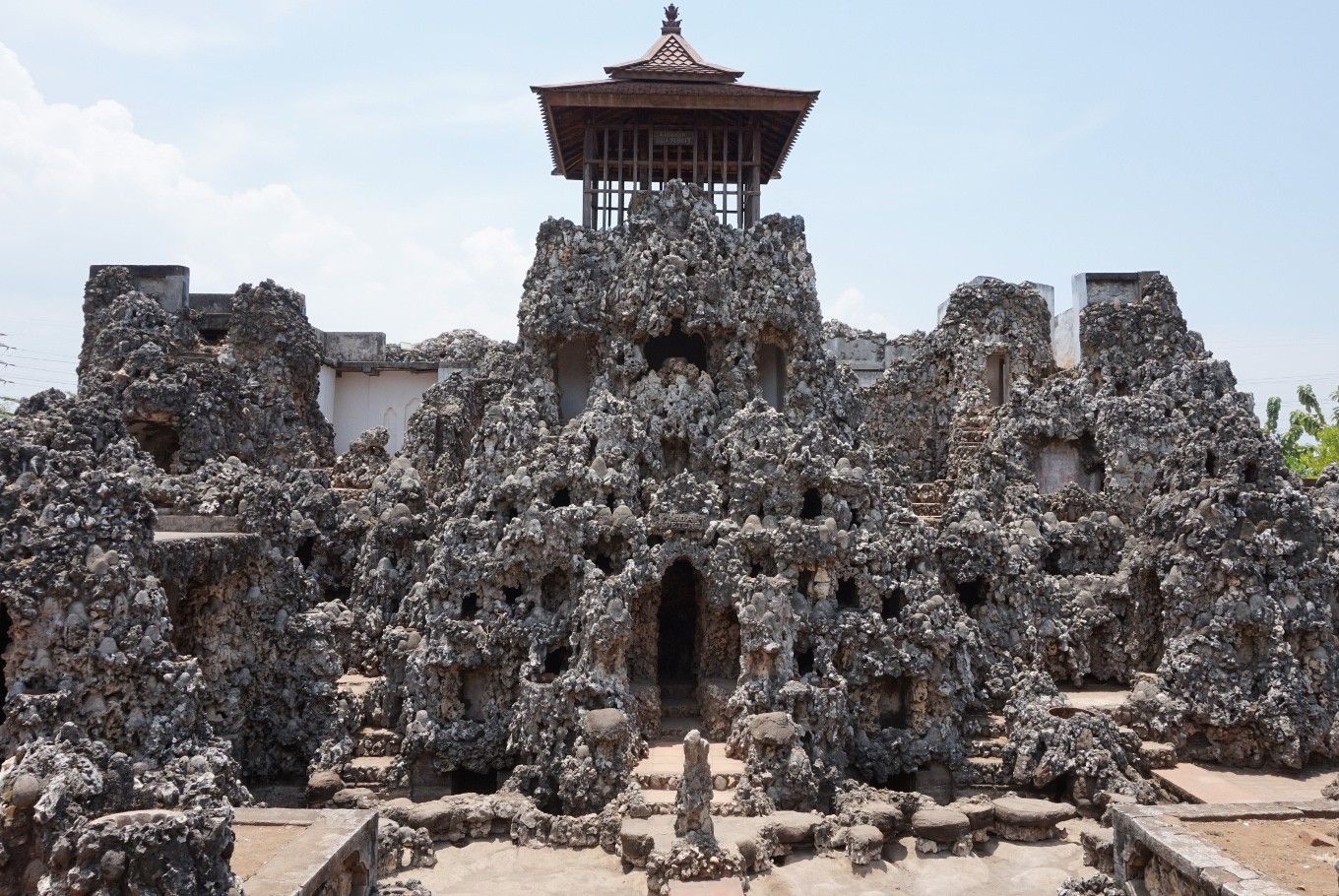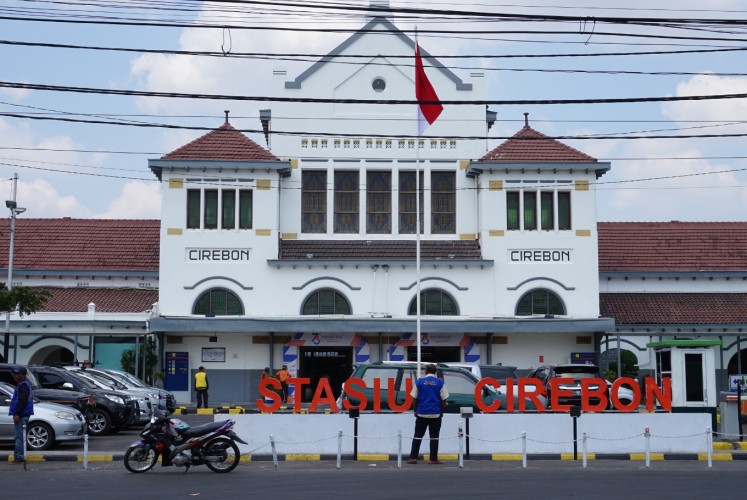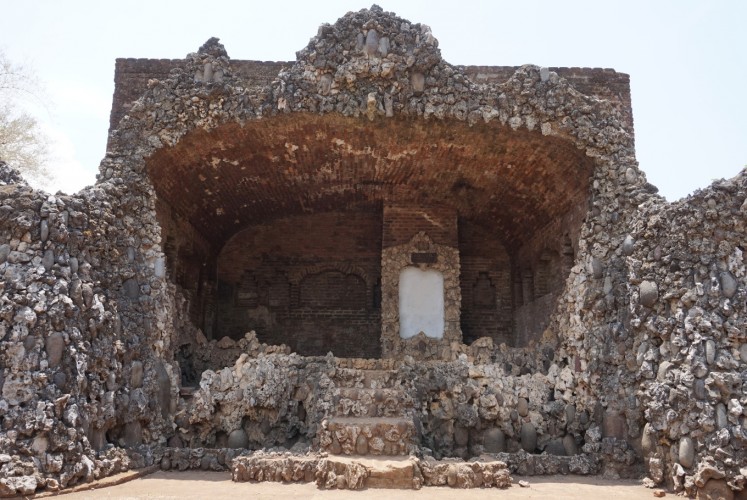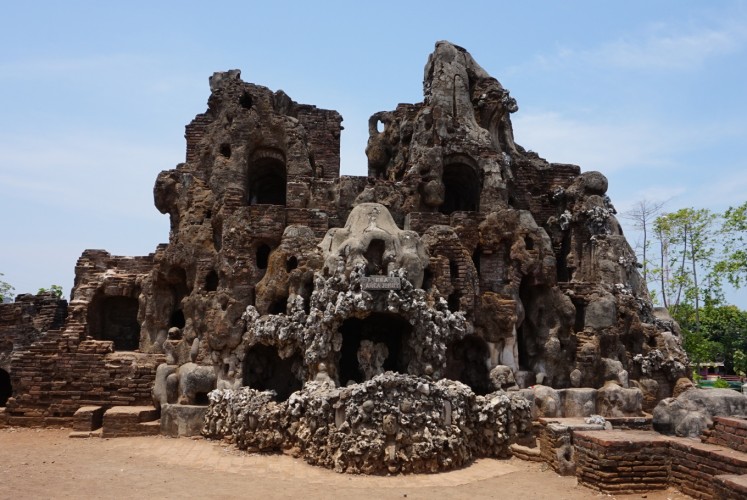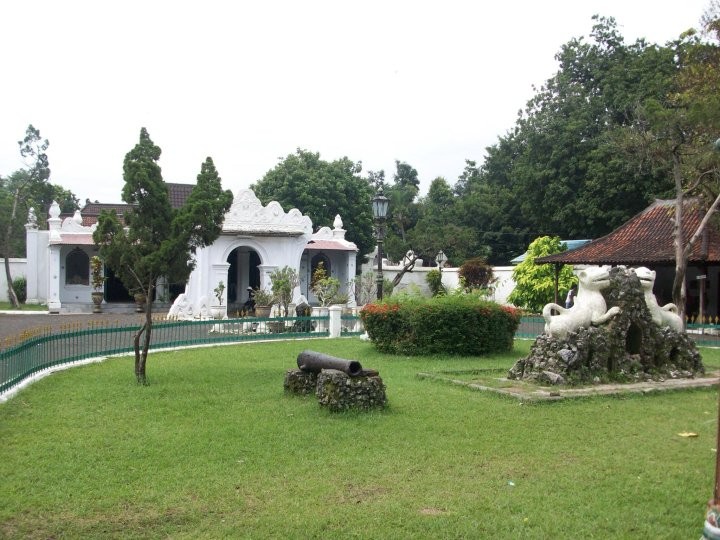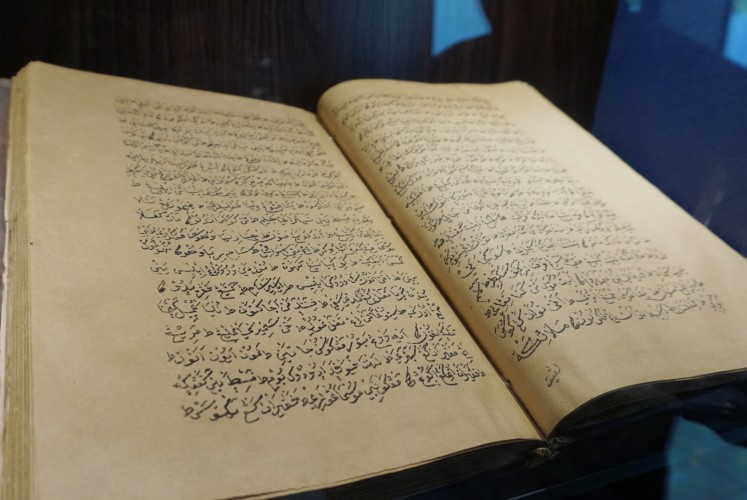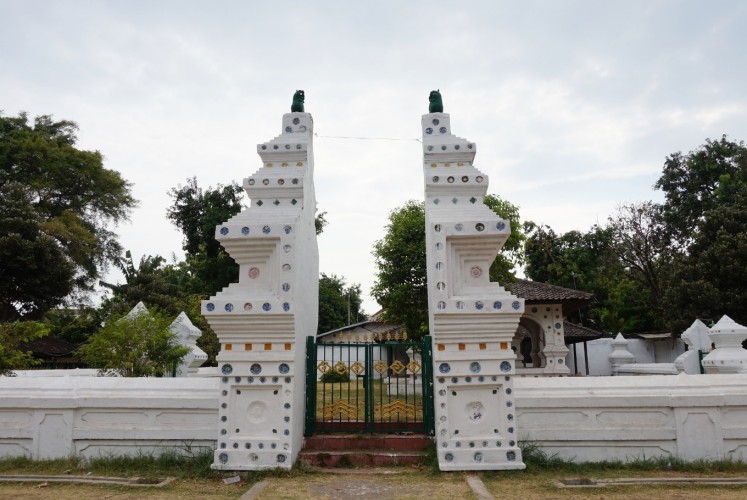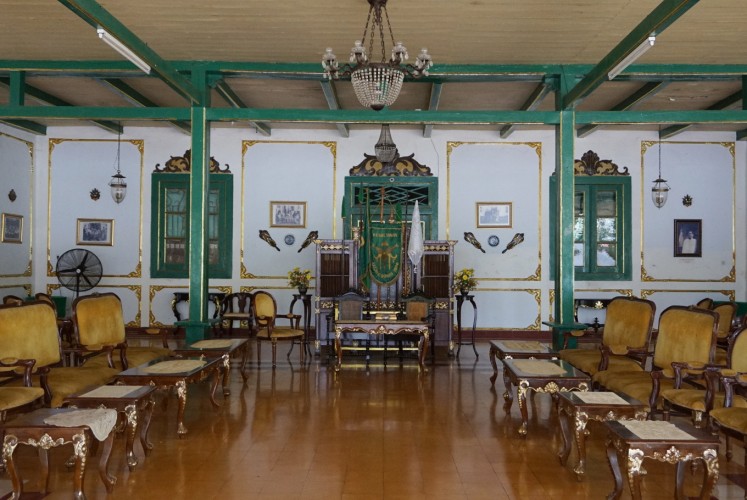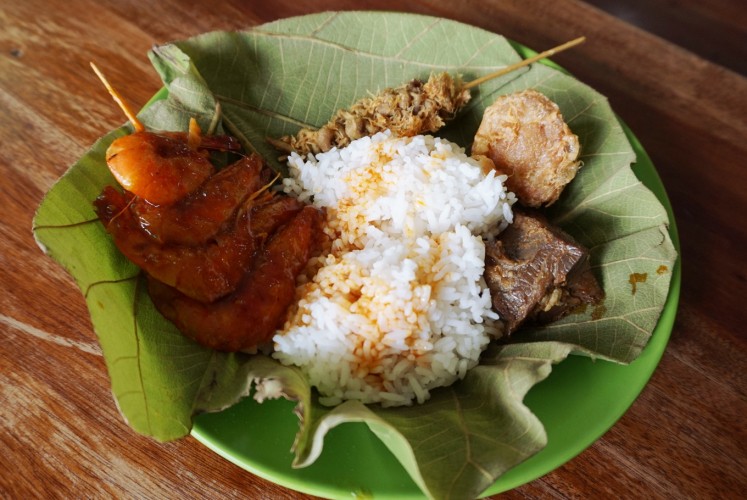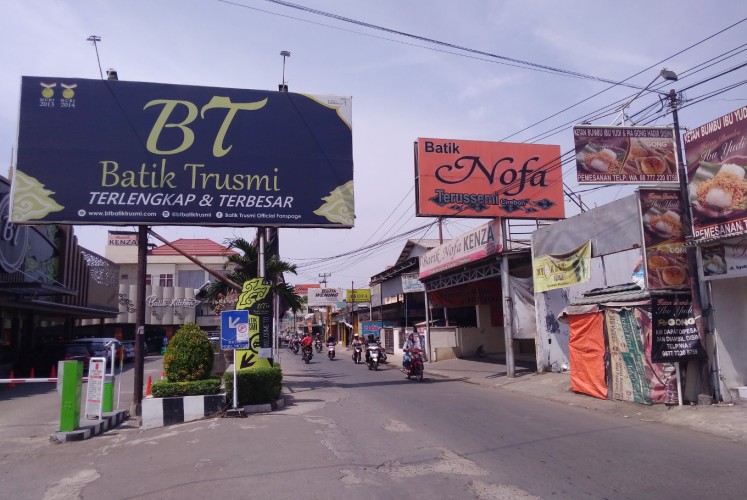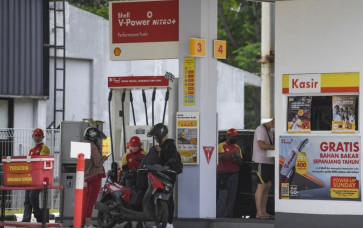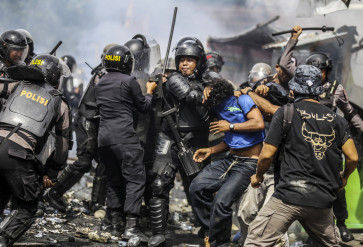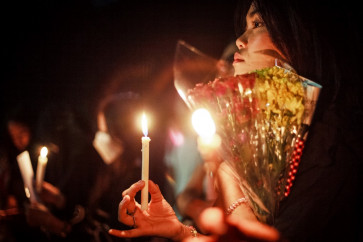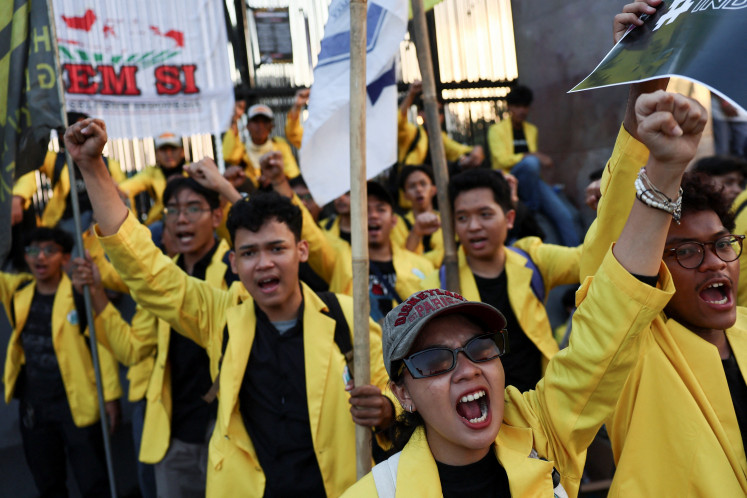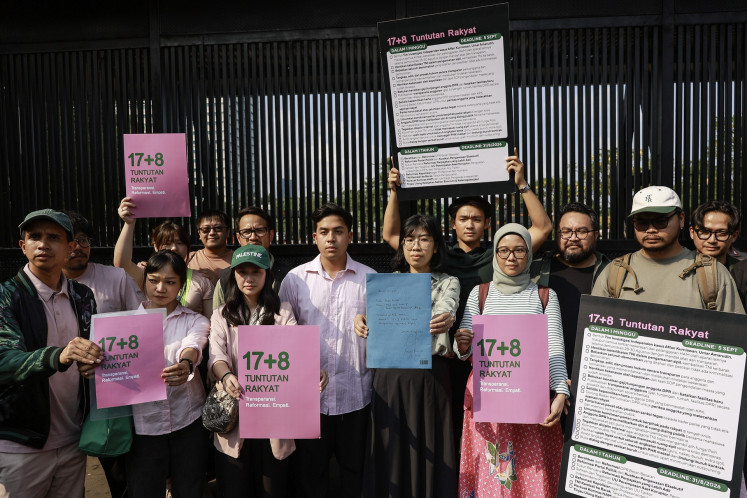Popular Reads
Top Results
Can't find what you're looking for?
View all search resultsPopular Reads
Top Results
Can't find what you're looking for?
View all search resultsJakpost explores Cirebon
Located only three hours away by train from Jakarta, the port city of Cirebon still maintains its historic buildings and culture.
Change text size
Gift Premium Articles
to Anyone
T
he port city of Cirebon in West Java is one of the tourist destinations that still maintains its history of Islam. It is located near the border between West Java and Central Java.
How to get there
The Cirebon railway station. (JP/Ni Nyoman Wira)Cirebon is only three hours away from the capital by train, which leaves daily from Gambir (executive and priority trains) and Pasar Senen (economy train) railway stations in Central Jakarta. They will arrive in Cirebon and Cirebon Prujakan railway stations, respectively.
Best times to visit
Cirebon can be visited all year round as the weather is similar to Jakarta. The peak season is usually during religious holidays, especially the birthday of the Prophet Muhammad, which falls on Nov. 20 this year and on Idul Fitri.
Climate
The temperature in Cirebon can reach 35 degrees Celsius during the dry season with little chance of rain.
Popular areas
Sunyaragi Cave
Sunyaragi Cave is a great destination to learn about the history of Cirebon. It was built in 1703 by Prince Kararangen who is the great-grandchild of Sunan Gunungjati, one of the nine propagators of Islam in Java, and it used to be surrounded by a moat.
The name Sunyaragi comes from sunya (quiet) and ragi (soul or body), meaning that the cave was used to meditate. Covering a 1.5-hectare area, the cave still maintains its original shape and comprises 10 smaller caverns with their own names. Visitors may explore the caverns and imagine the glorious days of the cave.
Goa Arga Jumut (Arga Jumut cave) at Sunyaragi Cave in Cirebon, West Java. (JP/Ni Nyoman Wira)Some interesting spots to visit at Sunyaragi Cave include a secret tunnel to Gunungjati district, special rooms for those “who want to go to Mecca and China”, a cave that “enlightens your soul”, a 300-year-old longan tree and a sculpture that is believed to be forbidden for virgins to touch. Entrance tickets start from Rp 10,000 (66 US cent) with tips for guides costing you around Rp 50,000.
Read also: Jakpost explores Bandung
Keraton Kasepuhan
The front lawn of Kasepuhan Palace in Cirebon, West Java. (kasepuhan.com/File)Cirebon has three keraton (palaces) and the oldest one is Keraton Kasepuhan. There are various stories about the origins of Keraton Kasepuhan, but all of them name Sunan Gunungjati as one of the important figures who established the palace. Sunan Gunungjati is the grandson of Prabu Siliwangi, king of the Padjajaran Kingdom. The kings of Keraton Kasepuhan are called Sultan Sepuh, with the current king, PRA. Arief Natadiningrat, as the 14th Sultan Sepuh.
The palace still maintains its original materials, especially its walls and teak pillars. Its architecture was influenced by the Chinese and Hindu kingdoms of the time. Among the areas that you may visit are Siti Hinggil (higher ground) where the king witnessed events in an alun-alun (square), located near the entrance gate, and Bangsal Keraton, where main activities took place. However, some of the rooms are prohibited, but they can still be seen through glass doors.
An ancient text displayed at Museum Pusaka at Keraton Kasepuhan in Cirebon, West Java. Most of the artifacts are kept inside glass boxes, including the Singa Barong royal carriage. (JP/Ni Nyoman Wira)The sultanate is the home of the modern-designed Museum Pusaka, which displays various sacred objects, including the Singa Barong royal carriage, gamelan (traditional orchestra) sets, weapons and ancient texts. It has a room at the back to keep important objects owned by Sunan Gunungjati and his wife, Princess Ong Tien from China. It is open to the public on Sundays from 9 a.m. to 4 p.m.
Keraton Kasepuhan is located near the historical Great Mosque of Cirebon, or Masjid Agung Cipta Rasa. Entrance tickets start from Rp 20,000 for foreign travelers, and another Rp 25,000 ticket must be bought to enter Museum Pusaka.
Up-and-coming areas
Keraton Kanoman
Located behind Kanoman traditional market, Keraton Kanoman has a stark white exterior with ancient Chinese plates adorning its walls. (JP/Ni Nyoman Wira)Keraton Kanoman is said to be the extension of Keraton Kasepuhan and whose kings are called Sultan Anom. Located behind the Kanoman traditional market, the palace's exterior is all white and has ancient Chinese plates adorning its walls. It has several wells that serve different purposes, one of which is to wash sacred items during the Prophet Muhammad's birthday.
Keraton Kacirebonan
Inside Keraton Kacirebonan. (JP/Ni Nyoman Wira)Believed to be the extension of Keraton Kasepuhan as well, Keraton Kacirebonan was built in 1814 with Sultan Kacirebonan I as its first king. This building is much simpler compared to the aforementioned palaces and visitors can marvel at photos of its kings, a gamelan set, traditional weapons, jewelry and the king’s sword. The entrance fee to this palace starts from Rp 10,000.
The city also has Cirebon Waterland Ade Irma Suryani, located not too far from Kejawanan Beach. Launched in 2015 and designed as a family destination, it has swimming pools and cottages.
Cuisines
Tahu gejrot (fried tofu in sweet, spicy sauce) is a must-try snack in Cirebon. It is sold almost everywhere around the city, especially in the Kanoman traditional market.
"Nasi jamblang" from Nasi Jamblang Ibu Nur in Cirebon, West Java. The rice, sides and the slight bitterness from the teak leaf are a flavorful combination. (JP/Ni Nyoman Wira)For something heavier, try nasi jamblang (teak leaf-wrapped rice with sides); the rice, sides and slight bitterness from the teak leaf are a flavorful combination. Cirebon has many nasi jamblang restaurants, one of which is Nasi Jamblang Ibu Nur, which is quite packed during lunchtime. The price of your meal will depend on the side dishes; for instance, two portions of rice, shrimp satay, chicken intestine satay, beef tongue stew and perkedel kentang (fried potato patties) will cost Rp 35,000.
Empal gentong and empal asam are also a great option for lunch. Empal gentong is an aromatic beef soup with coconut milk-based broth, while empal asam is cooked without coconut milk but mixed with the sour belimbing wuluh (starfruit). At Empal Gentong H. Apud restaurant, the price for one portion of empal gentong starts from Rp 23,000. It also has canned empal gentong that lasts for a year, with prices starting from Rp 35,000.
Read also: What to do in Cirebon besides visit the palace
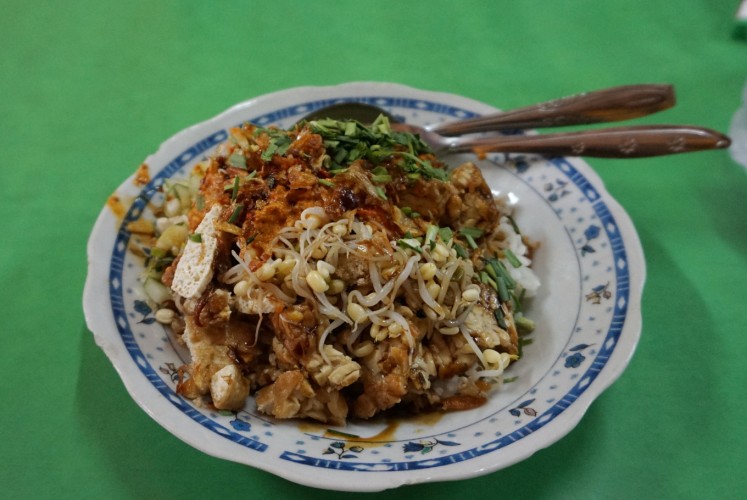 Anies Baswedan's favorite Cirebon dish.">
Anies Baswedan's favorite Cirebon dish.">
For a more filling lunch, try nasi lengko. Commonly served with lamb satay, nasi lengko comprises rice mixed with tempeh, tofu, bean sprouts, cucumber and chives topped with peanut sauce. At Nasi Lengko H. Barno, the price for a generous portion of nasi lengko starts from Rp 15,000. The restaurant is a must-visit for Jakarta governor Anies Baswedan whenever he travels to the city, according to Antara news agency.
What to bring back
Cirebon is known for its batik, which boast a mega mendung pattern. Batik Trusmi is a one-stop shopping destination for batik, souvenirs and traditional snacks.
Trusmi provides a wide array of batik cloth, from premium materials to the more affordable ones, with the average price of Rp 200,000. The average price for a traditional snack, including the city’s famous terasi (shrimp paste), is Rp 20,000. The area is surrounded by other batik shops as well, which can be reached by foot.
Batik Trusmi (left) in Cirebon, West Java, is a one-stop shopping destination for batik, souvenirs and traditional snacks. (JP/Ni Nyoman Wira)You may also want to bring back some ketan gurih (glutinous rice topped with sweet-savory sauce) from Rumah Kue Ny. One portion costs Rp 10,000, but you have to make a reservation beforehand. Another place to buy ketan gurih is Kampoeng Tjaroeban near the Kanoman traditional market; it sells the delicacy for Rp 8,000 per portion.
Where to stay
Cirebon has many options when it comes to hotels, either budget or four-star ones. Among them are the Luxton Cirebon Hotel & Convention, Cirebon Plaza Hotel and Hotel Santika Cirebon. Many are located within a walking distance from the Cirebon railway station.
Tips:
- Alun-alun Kejaksan is frequented by locals as a meeting point or jogging area. Located in front of Masjid Raya At-Taqwa, it also has a special area for street food hawkers.
- Most travel sites list the opening hour of most keraton as 8 a.m., but it is best to come at 10 a.m. or later as many of the guides will be available at those times.
- The tip for the guides depends on the destination and the guide’s performance throughout your visit, but it varies from Rp 20,000 to Rp 100,000. It is usually given at the end of the tour.
- The Kanoman traditional market can be packed with people in the morning and will be less busy after lunch. Be careful when strolling around the market because its main street is filled with pedestrians, motorcycle drivers and becak (pedicabs).
- An alternative was to explore the city is by becak, which can be found everywhere. But be ready to bargain and remember that the fare depends on the distance you will travel. (mut)

